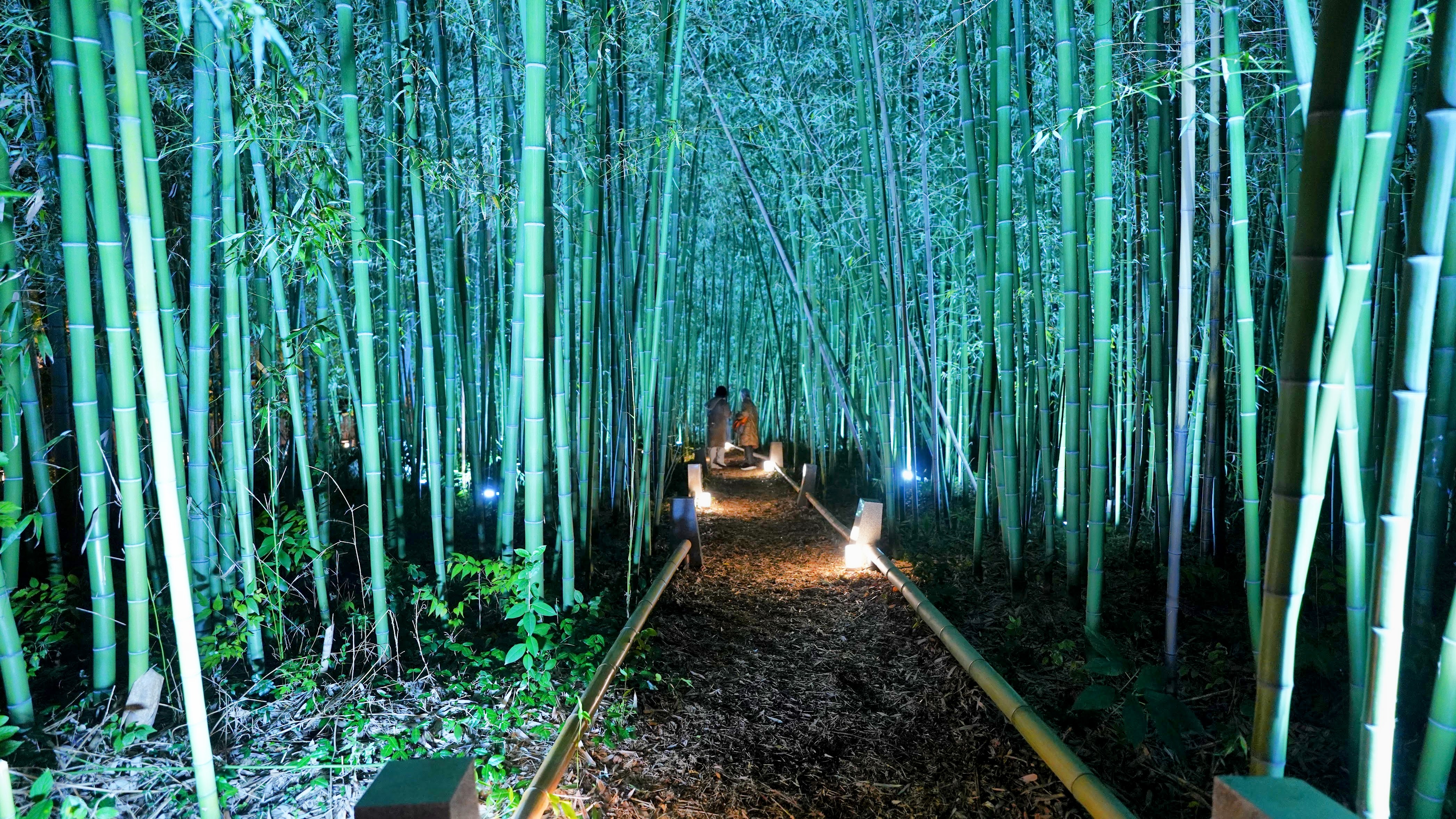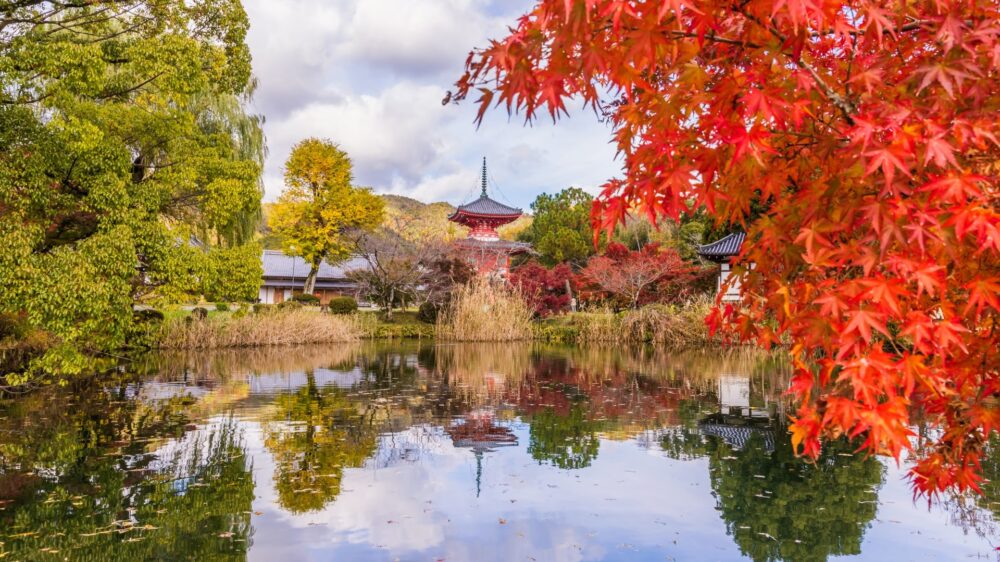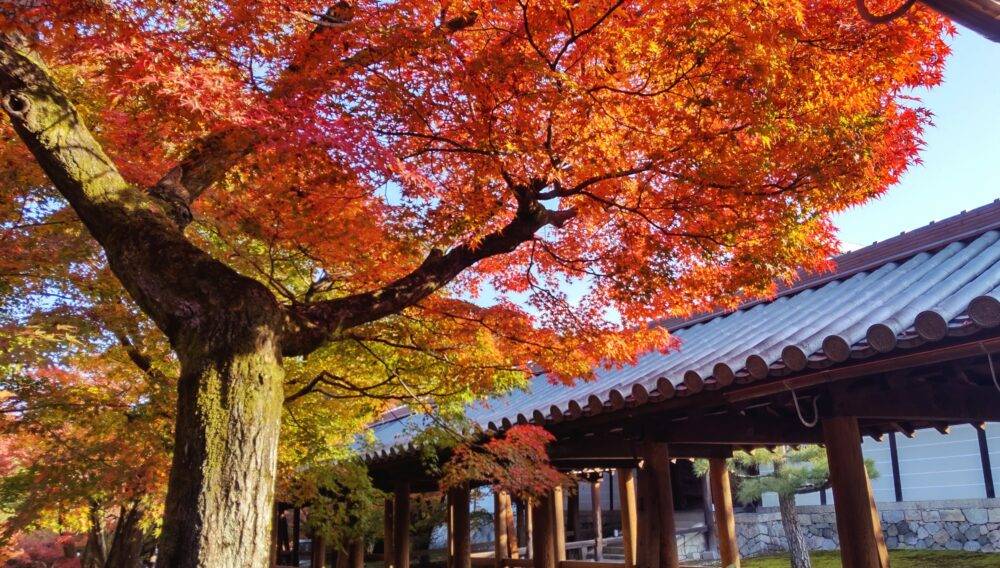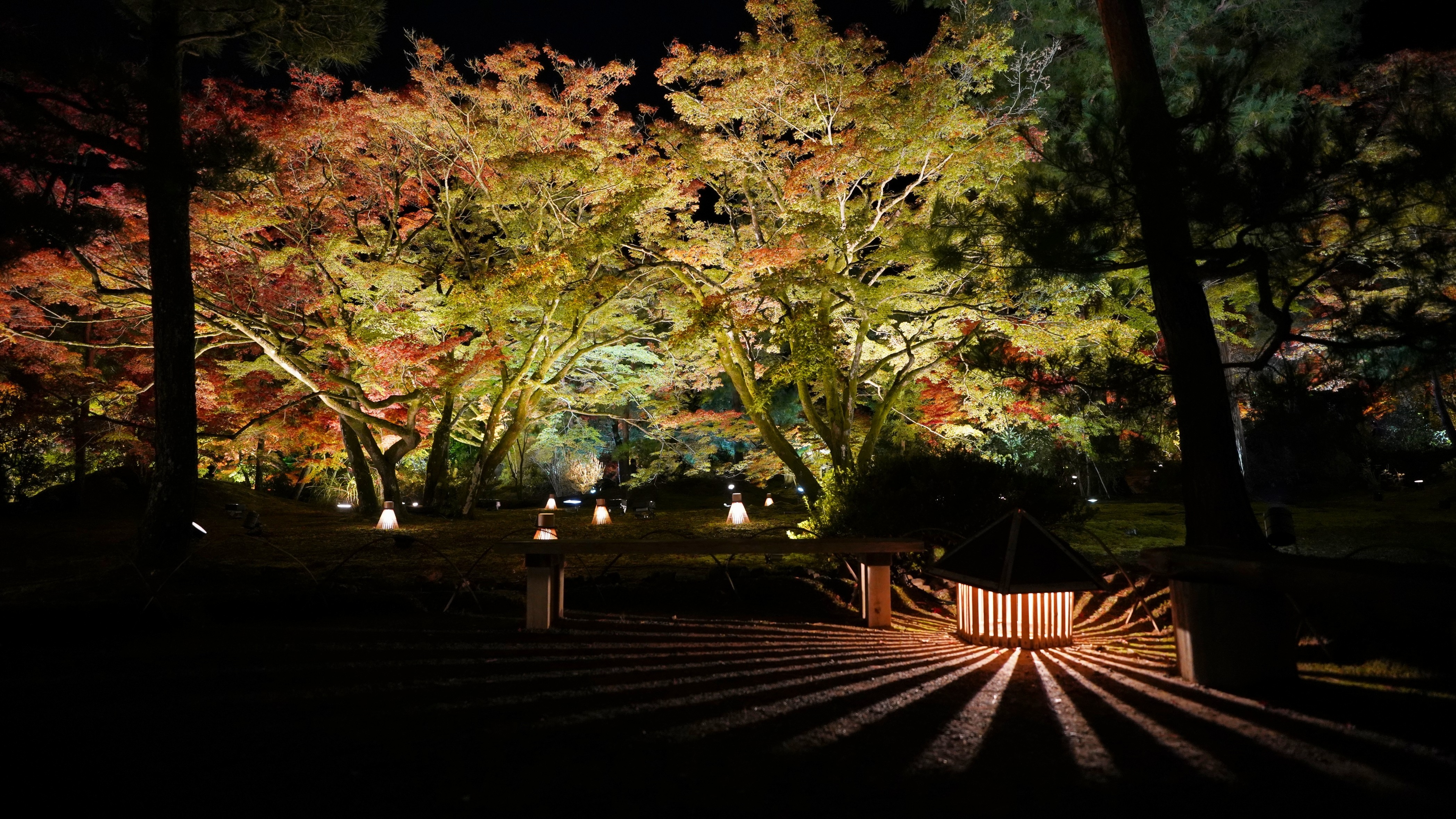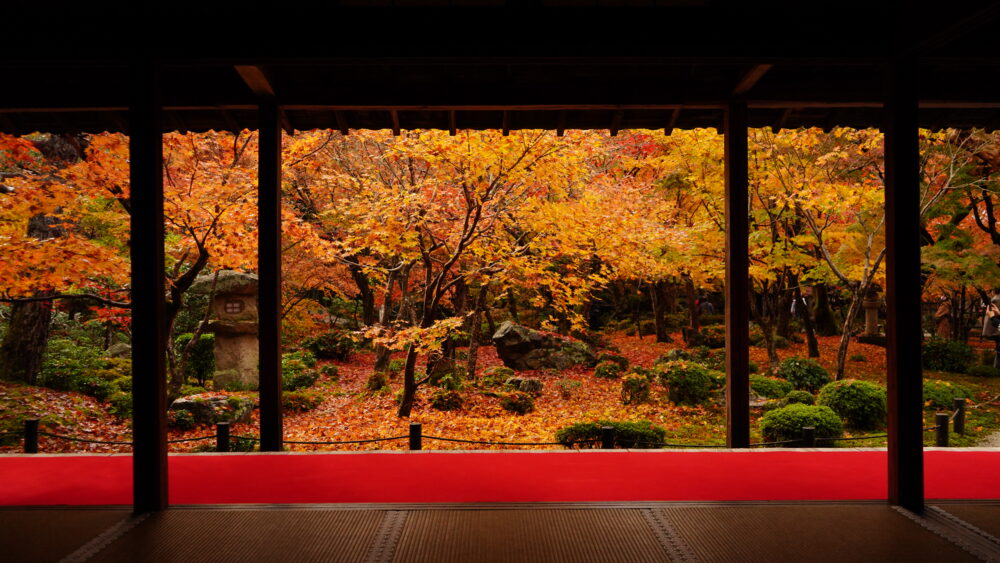Okochi Sanso Garden in Arashiyama – All You need to know
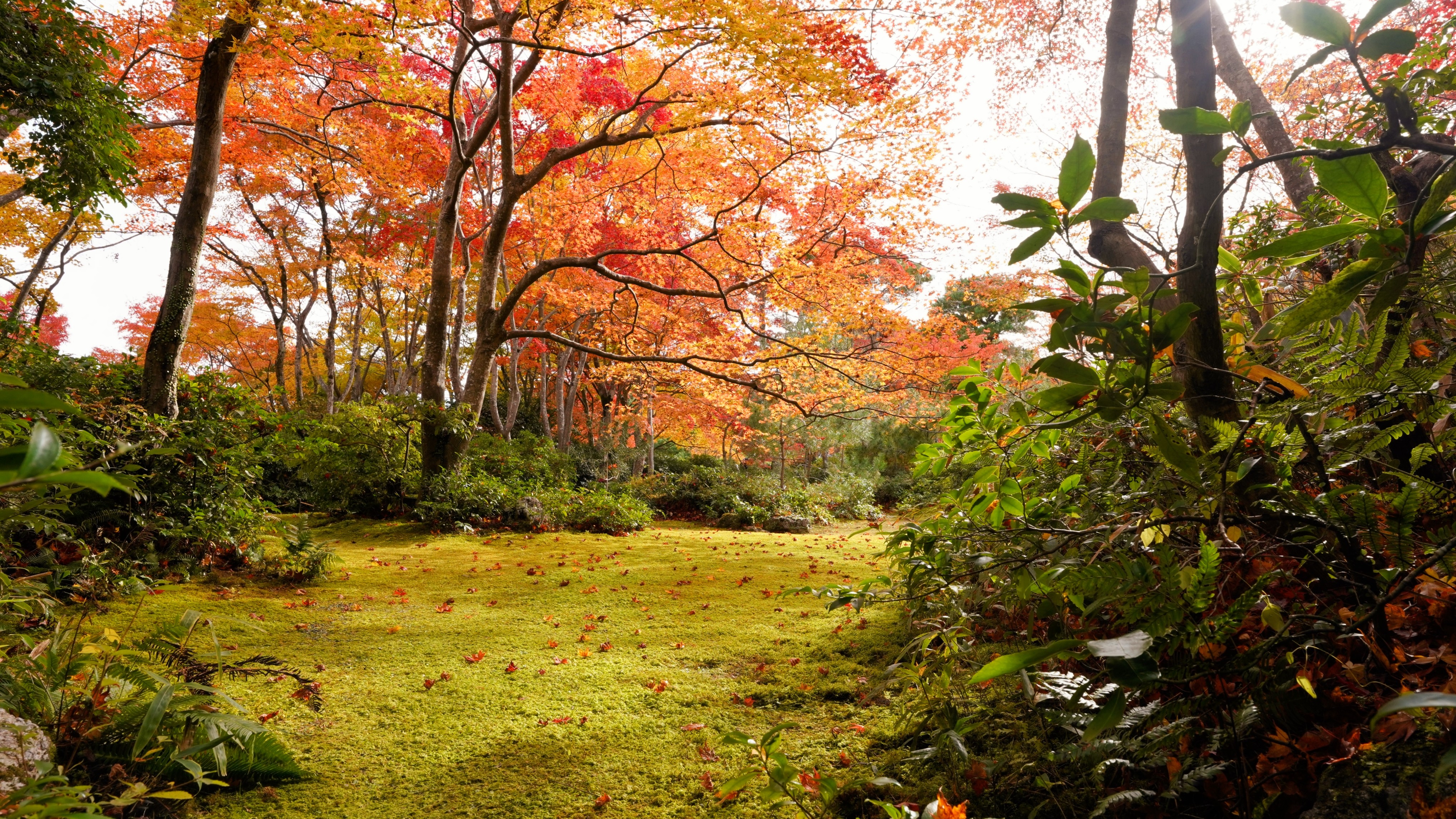
Located in Kyoto’s Arashiyama, just beyond the famous Bamboo Grove, lies the tranquil Okochi Sanso Garden. This stroll garden was meticulously built over the course of a lifetime by Okochi Denjiro, a renowned actor of the Showa era. Praised as a hidden gem in Kyoto, this serene, historic garden allows visitors to enjoy the beauty of nature throughout the year.
History

Okochi began constructing the garden in 1934. Driven by his desire to create “a beauty that would never fade” — a stark contrast to the films of his era, which were difficult to preserve long term — he personally designed and painstakingly built the garden over the course of 30 years, until his death at age 64 in 1962.
It’s said that he poured most of his acting fees into its creation. After acquiring the land, he built a private Buddhist temple (Jibutsu-do), where he reportedly meditated and read scripts.
The garden

Spanning 20,000 square meters, the Okochi Sanso Villa is a stroll garden with borrowed scenery. It incorporates the majestic scenery of Mount Arashiyama to the east, distant Mount Hiei to the south, and the Hozukyo Gorge to the west. The garden is meticulously designed to offer diverse views along its path.
There is also features a Japanese dry garden(Karesansui), where granite gravel is meticulously spread, and pruned Japanese black pines, 1 to 2 meters tall, are planted, creating an atmosphere of profound tranquility.
Seasonal Natural Beauty
Planted with pines, cherry trees, green maples in the summer, and autumn leaves in the fall, the garden offers a changing natural landscape throughout the year: cherry blossoms in the spring, lush greenery in the summer, vibrant colors in the fall, and snowy scenes in the winter.
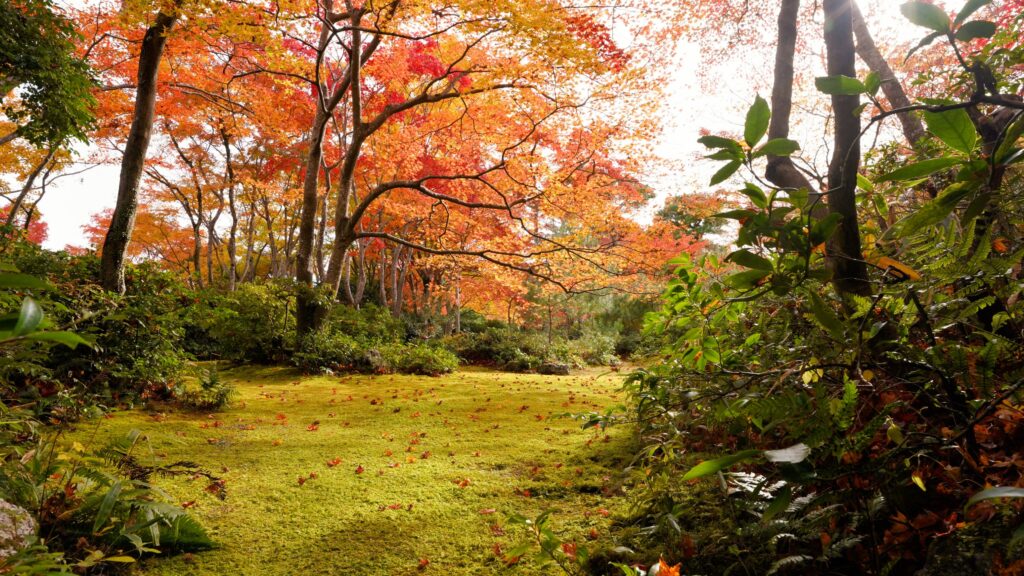
The autumn season, particularly mid-November to early December, is highly recommended for a visit due to the stunning fall colors. The maples within the garden turn red and the surrounding mountains become ablaze with color, creating a breathtaking spectacle.
Buildings
Numerous historic structures, many of which are designated as National Registered Tangible Cultural Properties, are scattered throughout the garden.
Daijo-kaku
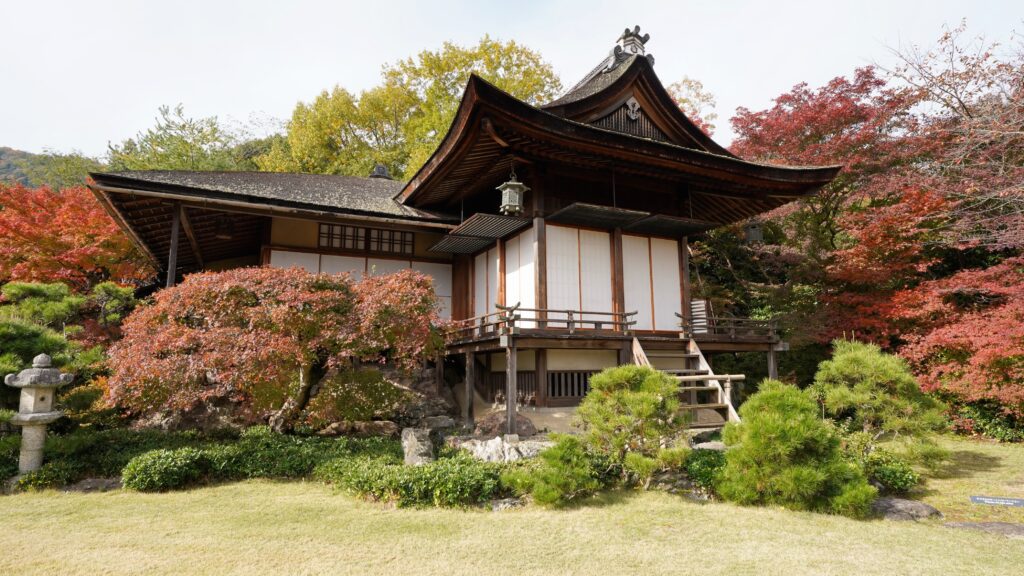
This is the main building you encounter upon entering the garden. It blends traditional Japanese architectural styles, such as Shinden-zukuri, Shoin-zukuri, and Sukiya-zukuri, in a harmonious way. The Sukiya master Kaichiro Fuefuki designed and constructed it. From here, you can enjoy a magnificent view, with Mount Ogura serving as borrowed scenery.
The Jibutsu-do
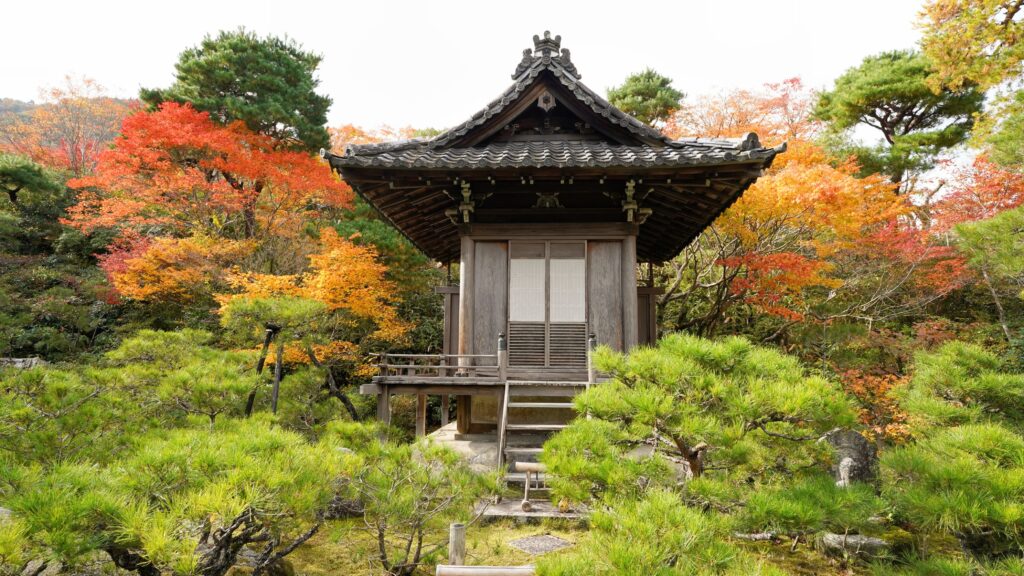
This is the first building that Okochi Denjiro constructed after acquiring the land, and it is believed to be where he practiced Zen meditation. A beautiful dry landscape garden (karesansui) spreads out in front of the hall. The contrast between the evergreen pines and the white sand is beautiful year-round.
Tekisui-an
This rustic teahouse, designed in the style of a hermitage, is located near a moss garden. It was also designed by Kaichiro Fuefuki.
Gekko-tei
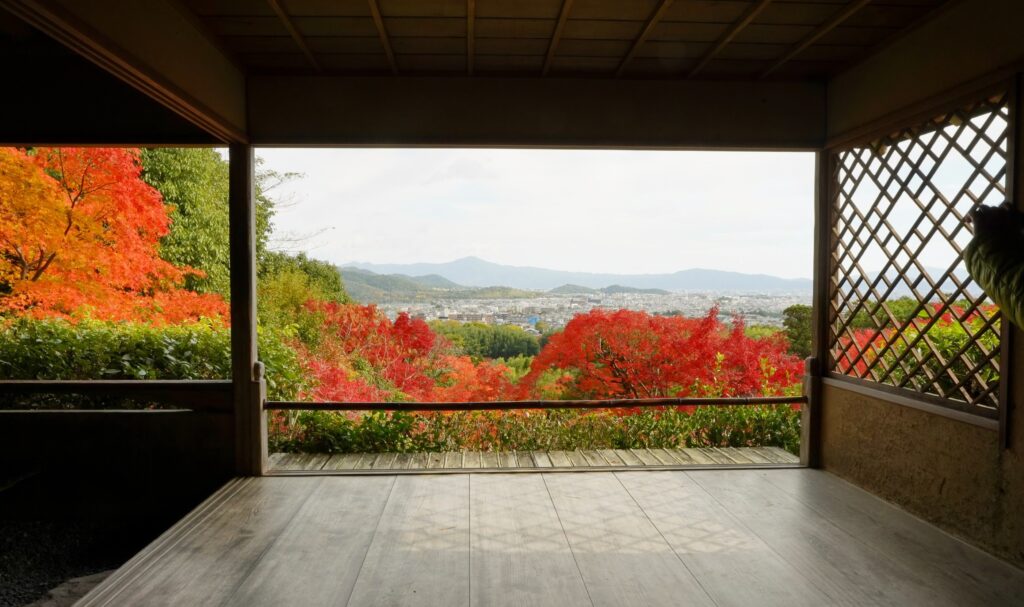
Located at the highest point in the garden, it offers exceptionally good views. The breathtaking scenery will make you want to sit and gaze for a long time.
Tekisui-an
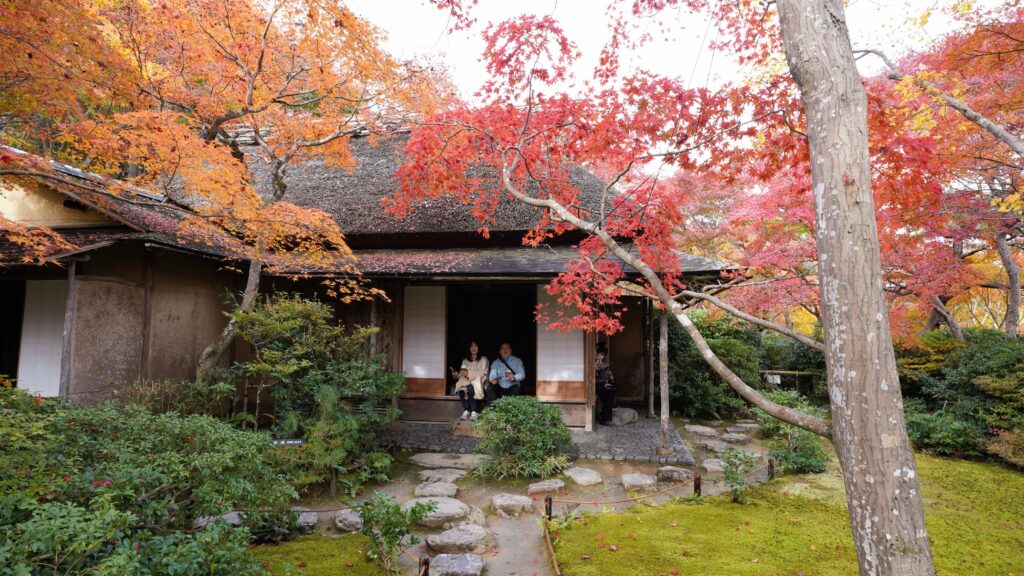
This rustic teahouse, designed in the style of a hermitage, is located near a moss garden. It was also designed by Kaichiro Fuefuki.
Okochi Denjiro Memorial Museum
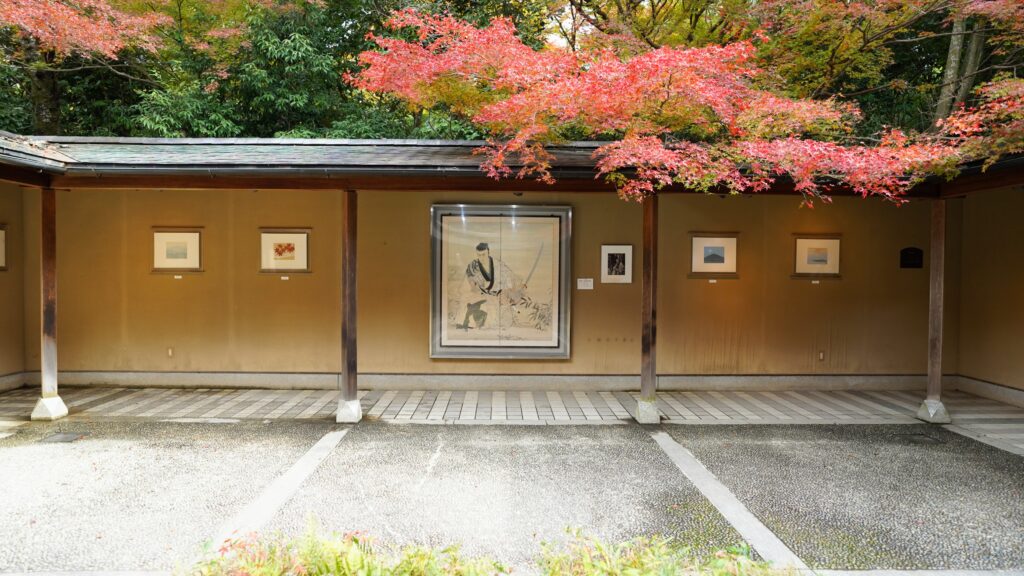
This museum, located within the garden, showcases photos and panels that tell the story of Okochi Denjiro’s life and career. Visitors can see pictures of him in his most famous role as Tange Sazen and get a sense of his character.
Infromation
Fees, Hours, and Crowds
Opening hours: 9:00 a.m. to 5:00 p.m. (last entry at 4:30 p.m.).
Closing Days: Open daily, year-round.
Admission Fee( Includes matcha tea and sweets.):
Adults: 1,000 JPY
Children (elementary and junior high school students): 500 JPY.
Recommended time to spend: Approximately 1 to 2 hours to walk through.
Crowd status: Although no specific visitor numbers are provided, the space is generally described as a “hidden spot” and “tranquil.” For a more peaceful experience, it is recommended that you visit early in the morning or on weekdays.
Location and Access
Okochi Sanso Villa is located at 8 Tabuchiyama-cho, Saga Ogura, Ukyo-ku, Kyoto, Kyoto Prefecture. Situated on the southeastern slope of Mount Ogura, famous for the Ogura Hyakunin Isshu poetry anthology, the villa covers a vast area nestled between Arashiyama Park (Kameyama Park). The entrance is located at the end of the Bamboo Grove path from Tenryu-ji Temple.
By train:
It is approximately a 10 to 15-minute walk from Arashiyama Station on the Keifuku Electric Railroad (Randenn).
It is also a 15 to 20-minute walk from Saga-Arashiyama Station on the JR Line.
By bus:
It is approximately a 10-minute walk from the Nonomiya bus stop (City Bus and Kyoto Bus).
Nearby Attractions
Okochi Sanso Villa is adjacent to Tenryu-ji Temple and located at the end of the Bamboo Grove path. It is also situated on the southern slope of Mount Ogura.
